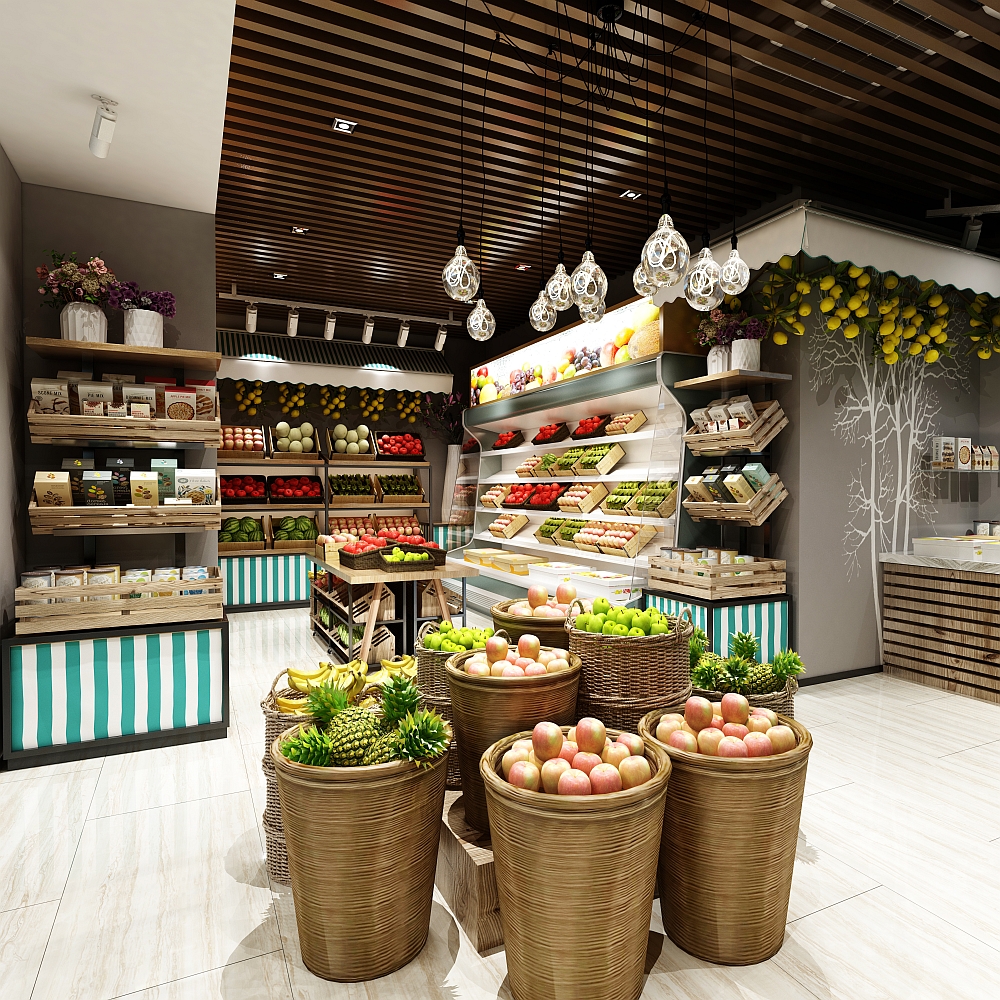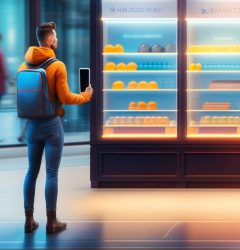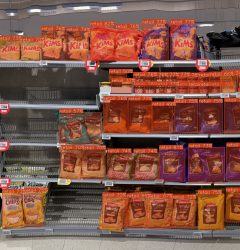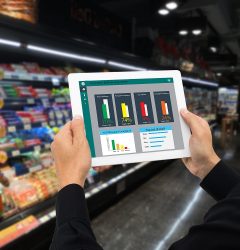02 Jun

Innovation in Retail Space: Streamlining Store Layouts
The world of retail is a landscape of constant change, driven by evolving consumer behavior, technology, and the dynamic nature of fashion and trends. With such constant evolution, one thing remains consistent: the importance of innovative retail space management. However, the contemporary retail environment extends far beyond the basic notion of stocking products on shelves. Today, it’s about creating a stimulating, customer-centric shopping experience that encourages sales.
The Concept of Retail Space
The term ‘retail space management’ refers to the strategic arrangement and presentation of retail merchandise. It’s a dynamic interplay between art and science that aims to maximize sales by designing an engaging consumer journey through your store. A well-designed store layout effectively navigates customers through your merchandise, seamlessly guiding their purchase decisions and influencing sales. However, retail space management goes beyond creating an efficient path for customers. It involves understanding and anticipating customer needs and preferences, promoting impulse purchases, and elevating the overall shopping experience.
The Science of Store Layouts
At the heart of retail space management lies the science of store layout design. An effective store layout harnesses customer behavior patterns to optimize sales. Did you know that customers, in general, tend to move to the right when they enter a store and then follow a counterclockwise path? This pattern provides valuable insights for product placement. Positioning high-demand or high-margin products along this natural customer path can significantly enhance visibility, leading to increased sales.The science of store layouts can be seen in successful real-world applications. Consider the Apple Stores with their minimalist design focusing on experience rather than merchandise. The layout encourages customers to touch, use, and explore the products. This interactive approach transforms the shopping experience, turning browsing into buying.
Understanding Customer Behavior and Traffic Flow
A critical component of successful retail space management lies in understanding customer behavior and managing in-store traffic flow. The store’s layout, aisle placement, product displays, and signage all influence customer movement, exposure to products, and consequently, their purchasing behavior. IKEA, the Swedish furniture giant, serves as a prime example of effective traffic flow management. Its showroom layout, famously known as the “long natural way,” directs customers through various sections, exposing them to a vast range of products. This strategic journey not only captivates but also persuades customers, ultimately leading to higher sales.
Innovations in Retail Space
Innovation has always been a cornerstone of successful retail, and retail space management is no exception. The advent of advanced technologies, such as AI, machine learning, and big data analytics, has brought about transformative changes in this domain. These innovative tools enable retailers to understand customer behavior patterns and preferences at a granular level. With this in-depth knowledge, retailers can make strategic decisions about product placement, store layout changes, and promotional displays, leading to increased customer engagement and higher sales. Emerging technologies such as Augmented Reality (AR) and Virtual Reality (VR) are also making their mark in retail space management. These technologies allow customers to visualize products in different settings, thereby enhancing their shopping experience and influencing their purchase decisions.
Streamlining Merchandising
Merchandising is a key player in retail space management. It’s all about the strategic presentation of products to pique customer interest and encourage purchases. Effective merchandising involves several techniques, such as product grouping, creating thematic displays, and implementing strategic shelf placements. For instance, product grouping or cross-merchandising involves placing related products together. This might involve displaying chips next to dips or shampoo next to conditioner. The idea is to make shopping more convenient for customers, while also encouraging additional sales. Thematic or seasonal displays also play a crucial role in merchandising. These displays catch the eye and create a sense of urgency, encouraging customers to make purchases while they can. Strategic shelf placement, such as placing high-demand items at eye level, is another simple yet effective merchandising technique.
The Future of Retail Space
As we look to the future, the landscape of retail space management is set to evolve further, incorporating even more advanced technologies and innovative design strategies. One emerging trend is the rise of ‘smart stores’ equipped with IoT devices, AI, facial recognition, and other technologies. These tools collect real-time data about customer behavior and preferences, allowing retailers to customize the shopping experience and make real-time adjustments to their store layout and merchandising strategies. Moreover, the growing consciousness about sustainability is influencing retail design. Retailers are increasingly incorporating elements like natural lighting, recycled materials, and biophilic design into their store layouts.
Harnessing the Power of Retail Video Analytics for Store Space Improvement
With the advent of cutting-edge technologies, today’s retailers have access to valuable tools that can drastically improve store space management. One such technology is retail video analytics. This powerful tool can transform ordinary surveillance footage into a treasure trove of actionable insights. At its core, retail video analytics involves analyzing video footage from surveillance cameras to understand customer behavior. It tracks parameters such as customer movement patterns, dwell times, and store occupancy levels, providing valuable insights that can inform your store space management strategies.
For instance, retail video analytics can identify which aisles or sections of your store receive the most traffic. Equipped with this knowledge, you can strategically position high-margin or promotional products in these areas to increase their visibility and sales. Likewise, analytics can also reveal ‘cold spots’ – areas in your store that customers seldom visit. You can address these cold spots by reconsidering the products displayed, adjusting the lighting, or changing the layout to make these areas more appealing. Furthermore, dwell time analysis can reveal which products or sections hold customers’ attention the longest. Such products can be placed strategically throughout the store to encourage customers to explore and discover other products, thereby boosting sales. Retail video analytics also prove useful in improving store layouts. By understanding how customers navigate your store, you can identify any bottlenecks or areas of congestion. This knowledge can guide adjustments to the layout, improving the flow of traffic and enhancing the overall shopping experience. In summary, retail video analytics can transform your store space management strategies. It provides tangible insights into customer behavior, helping you make informed decisions that enhance the shopping experience, optimize product placement, and ultimately drive sales. It’s a testament to the adage that seeing is believing – and in the realm of retail, seeing through the lens of video analytics can lead to powerful business results.
Leveraging Sales Analytics to Optimize Store Space
Sales analytics is a powerful tool that offers a wealth of insights into consumer buying patterns. With the right data-driven approach, sales analytics can serve as a compass guiding retailers to make strategic decisions in store space management. Sales analytics involves the collection, processing, and analysis of sales data. It provides a deeper understanding of product performance, customer preferences, and buying patterns. Using this data, retailers can create a store layout that is more aligned with their customers’ needs and behaviors, leading to increased sales and profitability. For instance, sales analytics can identify best-selling products. These high-performing items can then be strategically placed within the store to maximize their visibility and accessibility. They could be positioned at the store entrance to attract customers or placed at eye level on shelves where they are likely to catch a customer’s attention. Similarly, sales analytics can identify items that are frequently bought together. Retailers can use this information to arrange related products in close proximity to each other, a technique known as cross-merchandising. For example, if analytics reveal that customers often buy sunscreen and beach towels together, placing these items near each other can promote impulse purchases, thus increasing sales.
Sales analytics can also reveal seasonal trends and shifts in consumer demand. Retailers can use this information to adjust their store layout and product displays according to different seasons or trends, ensuring that the products with the highest demand are always prominent and accessible. On a broader scale, sales analytics can help retailers optimize the allocation of store space. By analyzing sales per square foot, retailers can identify which sections of their store generate the most revenue. This information can inform decisions on store layout adjustments, product placements, and space allocation for different product categories. In the era of omni-channel retailing, sales analytics can also provide insights into how online sales correlate with in-store sales. For example, a surge in online sales for a specific product could indicate a rising trend, suggesting that the product should be given more prominence in physical stores.
Conclusion
Innovation in retail space management isn’t just a fleeting trend; it represents a fundamental shift in the retail paradigm. Today, it’s about creating immersive, engaging, and personalized experiences that resonate with customers. Streamlining store layouts requires a deep understanding of your customers, a willingness to embrace technology, and the capacity to adapt continually. Retailers who master the art and science of retail space management will find themselves well-equipped to navigate the shifting tides of the retail industry. They’ll be able to create shopping experiences that not only meet but exceed customer expectations, fostering loyalty, and driving sales. In the dynamic world of retail, innovation in retail space management is the key to long-term success. To quote Philip Kotler, a leading authority on marketing, “Marketing is a race without a finishing line”. This statement rings especially true for retail space management, where continual adaptation and innovation pave the way for success. The retail landscape may be one of constant change, but with strategic, innovative approaches to retail space management, you’ll be well-equipped to navigate this exciting terrain.
Related Post
Tags
Keywords
Tags
Resources
© 2020-2024 Link Retail. All rights reserved.











